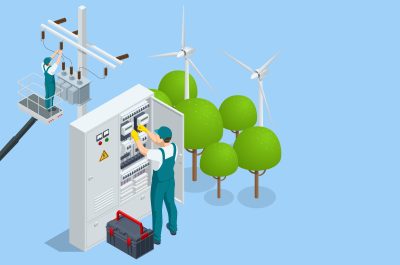Sustainable gas vs full electrification
ACT Government policies to move away from gas either partially or entirely are concerning as they limit options to decarbonise the Territory.
The Government’s plans are reflected in Evoenergy’s recent draft-plan.
An efficient, sustainable and secure energy system is one with both gas and electricity.
Each method of supplying energy has its optimal uses; for example, electricity may provide far more efficient lighting while gas, particularly in very cold temperatures, may be preferred for heating.
Gases such as hydrogen can be produced from renewable energy and offer more efficient and broader decarbonisation pathways to electricity alone.
The policy
Last year, the ACT Government flagged plans to move away from gas entirely, shutting off gas to the Territory and replacing it with electricity.
It said it wanted to “Copenhagenise” the city. The Government may have missed the memo that Copenhagen has done the opposite of phasing out gas; in fact, it has a strong gas focus.
Copenhagen is going through a transition to upgrade its gas to carbon-neutral biogas to achieve 100 per cent biogas by 2025. In June 2019, 44 per cent of Copenhagen’s gas supply was already carbon-neutral gas.
In its draft five-year plan for 2021 to 2026, Evoenergy has assumed no new suburbs will be connected with gas.
This move would present a challenge for the electricity infrastructure that will now need to take on the considerable extra load, especially during cold Canberra winters.

Figure 1: ACT energy demand (Source: Evoenergy gas network draft plan, February 2020).
Gas in the ACT
Currently, 85 per cent of ACT households are on the gas network. Canberra gas connections have grown at about two per cent per year. Most Canberrans rely on gas for heating and cooking. During winter, natural gas provides more energy than electricity.
To meet this extra demand with electricity, power infrastructure will need to more than double its current supply. That means more generation and more poles and wires.
Pursuing this policy of complete electrification would be prohibitively expensive for customers and wouldn’t make the best use of existing investments. It would also not necessarily make energy more sustainable in the ACT.

Figure 2: Comparison of residential gas demand in summer and winter
Hydrogen and sustainable gas – the alternative
A better option, one flagged by Evoenergy in its five-year plan, is to pursue decarbonised energy pathways such as renewable gas.
Networks around the country, including Evoenergy, are looking at blending sustainable gases, such as hydrogen, into their networks.
Options like this make far more economic sense.
The Gas Vision 2050 report by Energy Networks Australia showed that Australia’s gas infrastructure already has the same energy storage potential as six billion Tesla PowerWall batteries – enough for 250 for each Australian. This infrastructure is already built and can be used to run businesses, heat homes and water, and cook food.
Hydrogen can be produced from excess renewable energy. There are times during the day that we have too much solar or wind energy.
If there is too much generation, most is wasted, as seen by the number of times the electricity spot price has been below zero over summer. This excess energy could be converted into hydrogen and stored in the existing gas infrastructure for later use, creating a new economic opportunity to renewable energy producers.
Power bills
Phasing out gas would also drive up power bills.
Evoenergy warns in their plan that:
“Transferring residential customer load to electricity for all their energy needs would significantly increase the demand on the electricity network. This would require substantial investment to upgrade capacity of the electricity network and would leave our relatively young gas network and customers’ appliances unused. This would come at a high cost to consumers. In addition, this pathway would leave a large proportion of Evoenergy’s existing gas network investment unrecovered.”
The gas infrastructure is already built, it’s already in the ground, and it has the potential to deliver clean energy. In Canberra, the gas grid is relatively new and has many years of life left in it.
The costs of building new poles and wires are passed on to consumers, which is why networks are careful to ensure what is being built is in the best interests of customers. For example, replacing ageing infrastructure that is likely to fail could save customers in the long term; however, this is not the case in the ACT.
Another key reason is customers prefer gas heating to reverse-cycle electric heating in places where the mercury regularly drops below zero – like the ACT.
Providing decarbonised gas gives customers a choice about which fuel they use.
Where we stand
It’s important to note that Energy Networks Australia represents both electricity and gas distribution networks. Our members are the ones who would build and operate new electricity networks as well as the existing gas distribution networks.
Our primary interest, and that of our members, is an energy system that delivers for our customers. One where the gas and electricity grids work together to continue to deliver reliable, secure energy in tandem with cost-effective carbon reduction.
We do not support policies that drive additional investment in electricity networks simply to replace gas, especially when there are renewable gas options available. It’s a lose-lose for customers – they have to pay more for electricity infrastructure and they don’t get any benefit from the gas infrastructure they are already paying for.
The smarter and more efficient pathway is to decarbonise our gas networks by looking to alternate sources such as hydrogen and biogas.


